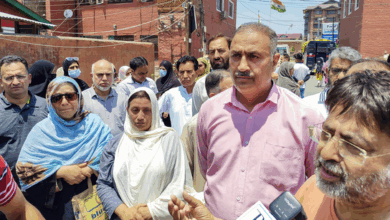‘Track all drone firms, declare no-fly zones near…’: Former army chief says entire country is now the battlefield
News Mania Desk / Piyal Chatterjee / 11th June 2025

Former Army Chief General Manoj Mukund Naravane has urged immediate policy and legislative measures to address emerging drone threats to vital infrastructure in India, in light of Ukraine’s extensive drone strike on various Russian airbases during a covert operation dubbed Operation Spider’s Web.
In an opinion piece in The Print, General Naravane wrote: “What these drone attacks have magnified is that there is no classical front line and that the entire country is the battlefield.” He urged the government to declare ‘no-fly zones’ near vulnerable areas and enforce them through severe penalties under the National Security Act, rather than treat drone violations as minor civil infractions.
Naravane also flagged the lack of accountability in India’s growing drone ecosystem. “It must be made mandatory for all such companies to register themselves and provide details of their manufacturing or assembly capacities, with a record of sales and verified end-users. An underground market for drones cannot be allowed to flourish,” he said.
He recommended that all drones be registered at local police stations, including their technical parameters. “Unauthorised possession or sale of drones needs to be made an offence through suitable legislation, on the lines of the Arms Act. All agencies need to work seamlessly to deal with this emerging threat.”
“This was Russia’s Pearl Harbour moment,” Naravane wrote. “Let us not forget that the US survived and, through the wrecks of sunken ships, rose and won the war… Forewarned is forearmed.” He compared the attack to Israel’s Operation Grim Beeper, which disabled thousands of pagers and walkie-talkies used by Hezbollah. Both operations, he said, marked a new era of asymmetric, non-contact warfare — a trend India must anticipate and counter.
While commending India’s Integrated Air Defence System (IADS) for neutralising drone threats during Operation Sindoor on the western front, Naravane warned that such defences are still border-centric and not geared to protect hinterland targets like airfields. “Given these realities, our vital installations are no more than a few hundred km from any border, making the institution of 360-degree preventive and precautionary measures all the more urgent.”
He developed a comprehensive strategy to safeguard against drone intrusions. This encompasses combined sensor networks utilizing radar, radio frequency (RF), and optical technologies; sophisticated geofencing with three-dimensional terrain modeling; and the implementation of microwave and RF-directed energy weapons (DEWs) that can incapacitate several drones at once.
Naravane additionally suggested employing physical countermeasures such as smokescreens, cope cages, and fortified shelters, alongside the establishment of rapid response teams and the engagement of civilian ‘spotter’ networks. He emphasized the necessity of consistent training, exercises, and civil-military collaboration to maintain operational preparedness.
He further condemned ongoing breaches of the Works of Defence Act in proximity to military facilities. “Even when breaches are seen and reported, they are overlooked by local officials, including the courts and police, aligned with the local community.” “This narrow-minded strategy regarding national security can lead to disastrous outcomes,” he stated, referencing a case in which the Karnataka High Court had set aside directives from the Ministry of Defence. The ex-army chief additionally stated that civil multi-story structures bordering the walls, from which assaults on particular targets and individuals can be conducted and monitored by FPV (First-Person View) drones, pose a “significant and serious threat.”






